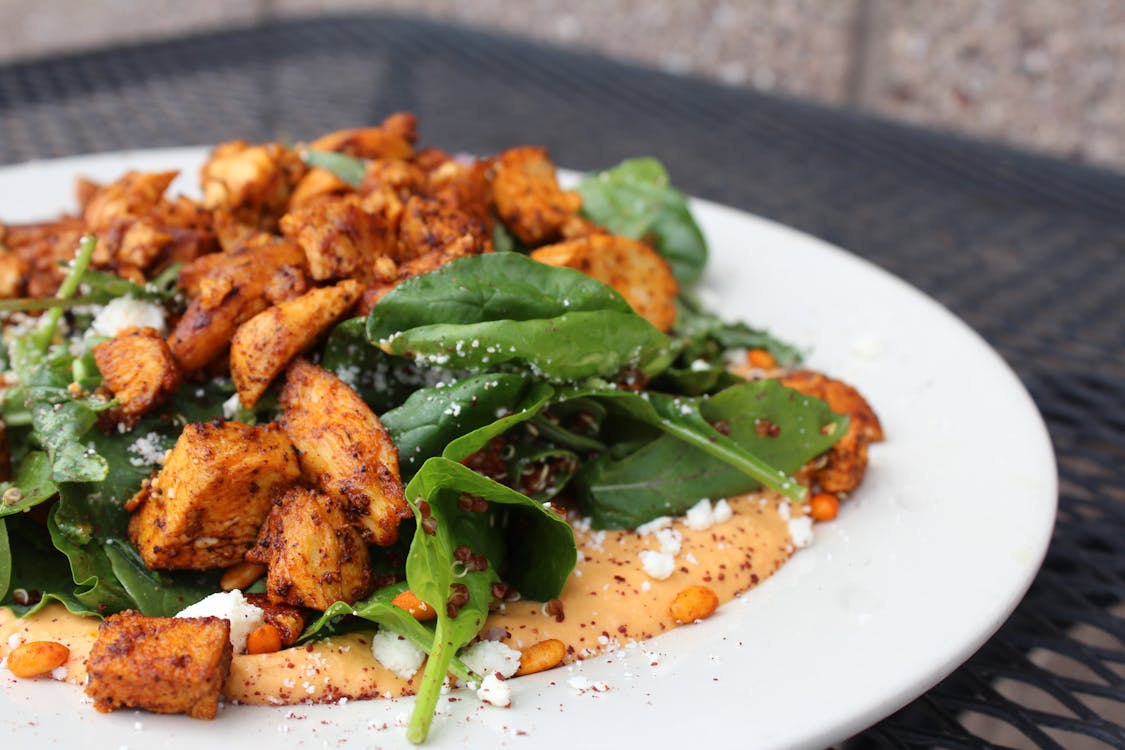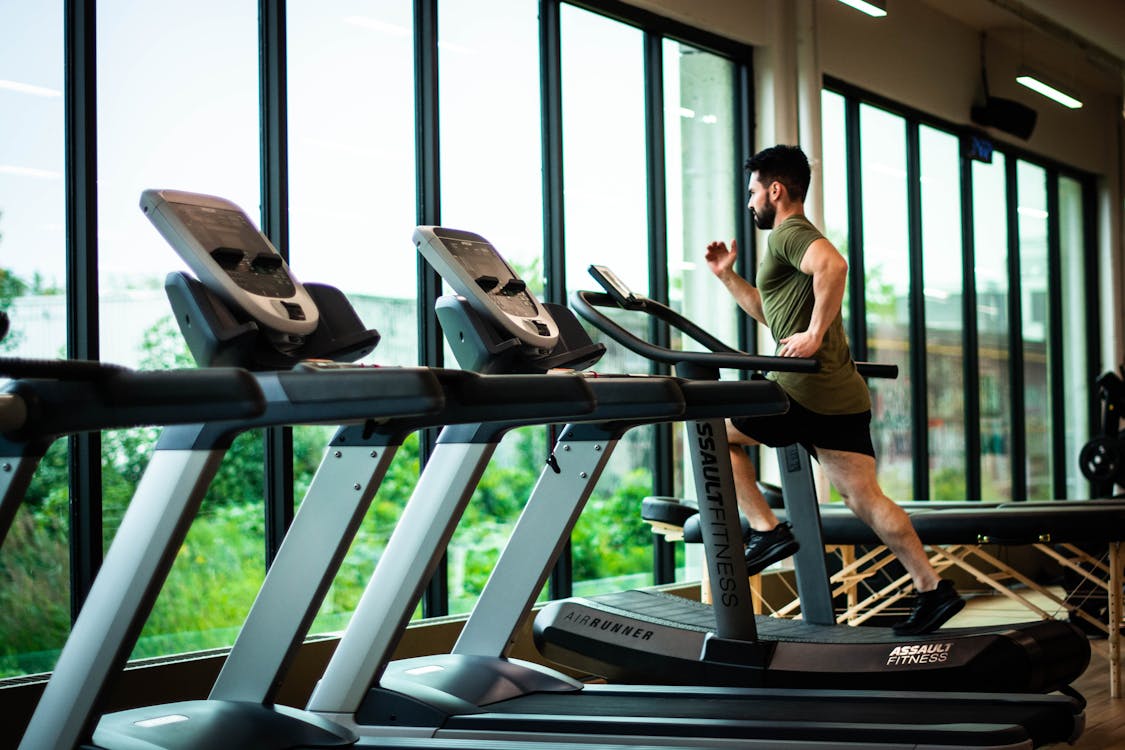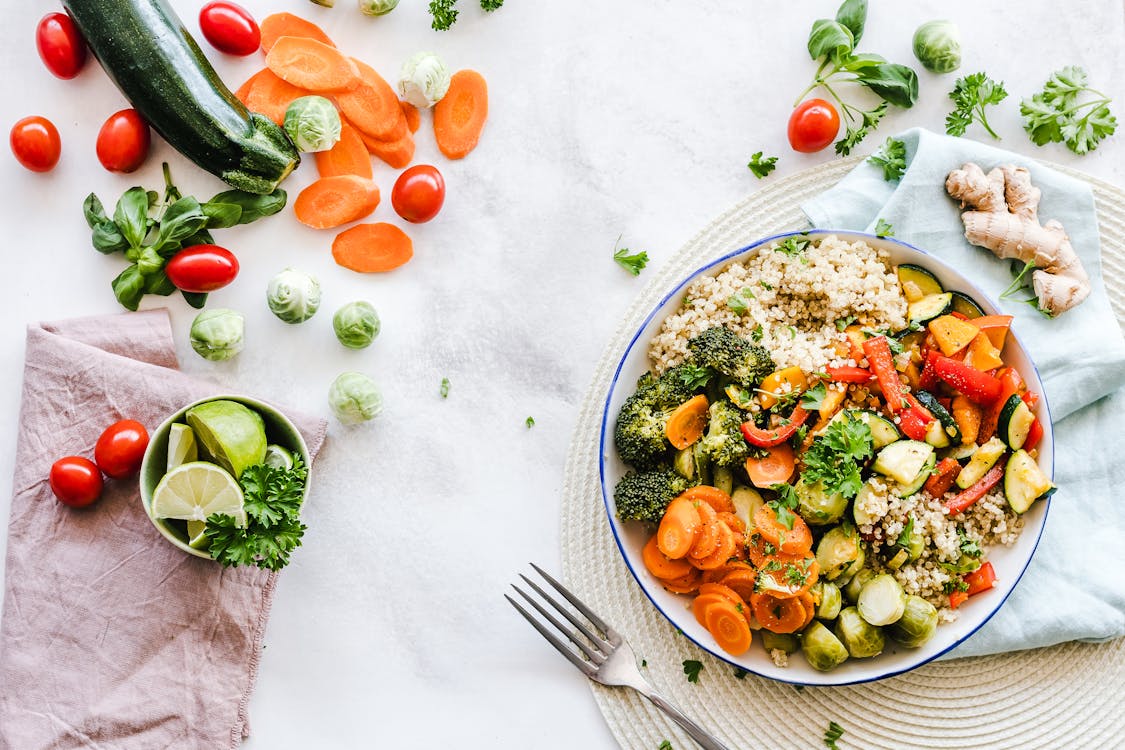The fitness world is buzzing with acronyms, and when it comes to cardio for fat loss, two titans constantly battle for a_desktop_target_blank_rel_noopener_href_httpsexamine.comnutritionfat-loss_title_the top spot: HIIT and LISS. You’ve probably heard the debates: Is High-Intensity Interval Training the magic bullet for shredding fat in minimal time? Or is Low-Intensity Steady-State cardio the tried-and-true path to leaning out? The conflicting information can leave anyone’s head spinning!
If you're feeling caught in this crossfire, wondering which path will truly lead you to your fat loss goals without burning you out or wasting your precious time, you're not alone. The truth is, the answer isn't as black and white as many claim. This episode dives deep into the science, busting some myths and revealing the practical realities of both approaches.

HIIT vs. LISS: Let's clear the confusion and find what works for YOU.
Let's unpack the evidence, explore the nuances, and help you decide which cardio strategy—or combination—is the champion for *your* lifestyle and fat loss journey.
Table of Contents
- Defining the Contenders: What Are HIIT & LISS?
- The "Afterburn" Effect (EPOC): Fact vs. Fiction
- Time Efficiency: HIIT's Big Selling Point
- Beyond Calories Burned: Appetite, Motivation & Other Factors
- The Downsides of HIIT: Recovery & Overlap with Strength Training
- The Uncrowned King: Why Diet Reigns Supreme for Fat Loss
- Finding Your Fit: The Best Cardio is Sustainable Cardio
- Your Top HIIT vs. LISS Questions Answered
- Cardio in Your Holistic Wellness Symphony
Defining the Contenders: What Are HIIT & LISS?
Before we dissect the debate, let's get clear on our terms:
- ⚡ **HIIT (High-Intensity Interval Training):** Involves short, explosive bursts of all-out effort (think sprinting, intense cycling, or vigorous bodyweight exercises) alternated with brief periods of low-intensity recovery or complete rest. A typical work-to-rest ratio might be 1:1 or 1:2 (e.g., 30 seconds sprint, 30 seconds walk).
- 🚶♀️ **LISS (Low-Intensity Steady-State Cardio):** Consists of continuous exercise performed at a moderate, consistent pace for a longer duration. Examples include brisk walking, jogging, cycling, or using an elliptical at a steady effort level where you could hold a conversation.
Traditionally, LISS was favored for fat loss because it primarily utilizes fat as a fuel source *during* the activity. However, HIIT gained immense popularity with the allure of burning more calories in less time, largely due to the "afterburn effect."
The "Afterburn" Effect (EPOC): Fact vs. Fiction
One of HIIT's most touted benefits is Excess Post-exercise Oxygen Consumption (EPOC), often called the "afterburn effect." The theory is that your body continues to burn calories at an elevated rate for hours after a HIIT session as it works to recover and return to its resting state.

The afterburn effect is real, but its contribution to total calorie burn is modest.
While EPOC is a real physiological phenomenon, scientific evidence reveals its contribution to overall calorie expenditure is relatively small. The episode highlights that the afterburn typically amounts to only about **40-80 additional calories burned post-exercise**, depending on the session's length and intensity. Compared to the calories burned *during* the workout itself, or your total daily energy expenditure, this is minimal.
Key Insight: HIIT's afterburn effect is often overestimated. While it exists, it's not a magic bullet for significantly boosting your metabolism for hours on end. The primary caloric impact comes from the workout itself.
Time Efficiency: HIIT's Big Selling Point
Where HIIT truly shines is its time efficiency. A meta-analysis mentioned in the episode found **no significant difference in fat loss between HIIT and moderate-intensity continuous training (like LISS) when energy expenditure was matched.** However, HIIT achieved these similar results in about **40% less total training time.**
For busy individuals, this is a major draw. Getting a comparable fat loss stimulus in a shorter workout window (e.g., 20-25 minutes of HIIT vs. 40-50 minutes of LISS) can make exercise adherence much more manageable.
Expert Tip: Finding an exercise routine you can stick to is crucial. If time is your biggest barrier, HIIT's efficiency is a strong advantage. The Ultimate 30-Day Holistic Wellness Journey emphasizes building sustainable habits that fit *your* life, and choosing time-efficient workouts can be a key part of that.
⏳ SHORT ON TIME BUT SERIOUS ABOUT RESULTS? ⏳
✅ Discover How to Maximize Your Efforts with The Ultimate 30-Day Holistic Wellness Journey!
🎯 JOIN NOW: Get Time-Saving Meal Plans & Efficient Workout Strategies!
👇 CLICK HERE TO OPTIMIZE YOUR WELLNESS JOURNEY! 👇
🛒 START The Ultimate 30-Day Holistic Wellness Journey NOW! →(Make your wellness fit your life, not the other way around!)
Beyond Calories Burned: Appetite, Motivation & Other Factors
The benefits of HIIT might extend beyond just the direct calorie burn during and immediately after exercise, especially in "free-living" conditions (i.e., not in a tightly controlled lab setting). The episode touches on a few intriguing possibilities:
- 🍽️ **Appetite Suppression:** Some research suggests HIIT might have a more pronounced appetite-suppressing effect compared to LISS, potentially leading to a lower overall calorie intake.
- 🌟 **Increased Motivation & Effort:** Because HIIT feels more intense and "productive," it might psychologically motivate individuals to push harder in other workouts or adopt other healthy behaviors.
- Varied and Less Monotonous: For many, HIIT workouts can feel less monotonous than long LISS sessions, which can improve adherence.
However, it's important to note that these benefits might be less significant under strictly controlled diet and training conditions, especially for healthy, non-obese individuals. When total workout time is matched, both HIIT and LISS likely burn a similar number of calories *during* the session itself.
The Downsides of HIIT: Recovery & Overlap with Strength Training
While HIIT is time-efficient, it's not without its drawbacks:
- ⚠️ **Higher Recovery Demands:** HIIT is significantly more demanding on your body and nervous system. It requires more recovery time, and doing it too frequently can lead to overtraining, fatigue, and reduced performance in other workouts (like strength training).
- 🏋️ **Overlap with Strength Training:** If you're already engaging in intense weight training (which often involves high-intensity bursts with rest periods), adding too many separate HIIT sessions might be redundant. Your strength workouts might already be providing some of the anaerobic and cardiovascular benefits attributed to HIIT.
- 🤕 **Potential for Increased Injury Risk:** Due to the explosive nature of the movements, if form is compromised due to fatigue, the risk of injury can be higher with HIIT compared to LISS.
For these reasons, the episode wisely advises limiting dedicated HIIT sessions to **one or two per week**, and strategically spacing them away from intense leg days or heavy weight training sessions.

LISS cardio can be easier to recover from and perform more frequently.
The Uncrowned King: Why Diet Reigns Supreme for Fat Loss
This is a crucial takeaway from the episode: **cardio—whether HIIT or LISS—should NOT be your primary driver of fat loss. Diet plays the central role.** No amount of cardio can reliably out-train a poor diet.

Your nutritional choices are the most powerful lever for fat loss.
Exercise helps create a caloric deficit by increasing energy expenditure, but the most significant and controllable factor in creating that deficit is your calorie intake from food. Relying solely on exercise to lose fat often leads to frustration and burnout. A balanced, sustainable dietary approach is fundamental.
Finding Your Fit: The Best Cardio is Sustainable Cardio
So, what's the verdict? The episode beautifully concludes that **the best cardio modality is the one you can adhere to consistently and fit into your lifestyle without hindering recovery or performance in your other training.**
Consider these factors when choosing:
- 🕒 **Time Availability:** If you're very short on time, HIIT offers an efficient solution.
- 😊 **Enjoyment:** You're more likely to stick with something you find at least somewhat enjoyable (or at least tolerable!). If you despise HIIT, forcing it won't be sustainable.
- 🔄 **Recovery Capacity:** Be honest about how well your body recovers. If strength training is your priority, too much HIIT might compromise it.
- 🏃♂️ **Overall Activity Levels:** If you're already very active, you might need less formal cardio.
A highly recommended approach for most people is a **combination of both HIIT and LISS**. Lean more towards LISS for frequency (it's less taxing and can be done more often) and incorporate occasional HIIT sessions (1-2 times per week) for variety, time efficiency, and a different training stimulus.
Your Top HIIT vs. LISS Questions Answered
Is HIIT or LISS definitively better for fat loss?
Neither is definitively 'better' for pure fat loss when total calorie burn is equated. Meta-analyses show no significant fat loss differences between HIIT and moderate-intensity continuous training (LISS) when energy expenditure is similar. HIIT is more time-efficient, but LISS is often easier to recover from and sustain. The best choice depends on individual preferences, time availability, and recovery capacity. Diet remains the primary driver of fat loss.
How significant is the 'afterburn effect' (EPOC) from HIIT?
The afterburn effect (EPOC) from HIIT is real but often overestimated in popular fitness media. It contributes a modest number of additional calories burned post-exercise, typically around 40-80 calories depending on the session's intensity and duration. While a benefit, it's minimal compared to the calories burned during the exercise itself or overall dietary intake.
How many HIIT sessions should I do per week?
Due to its higher stress and recovery needs, it's generally recommended to limit dedicated HIIT sessions to one or two per week, especially if you're also strength training. These sessions should be spaced away from intense leg or heavy weight training workouts to avoid overtraining and allow for adequate recovery.
Can I lose fat with just LISS cardio?
Yes, you can lose fat with LISS cardio, provided you are in a caloric deficit (burning more calories than you consume). LISS is a great way to increase overall energy expenditure and can be done more frequently than HIIT due to its lower impact and recovery demands. Remember, diet is the most crucial factor for fat loss.
Does weight training count as HIIT?
Weight training, especially when performed with high intensity and relatively short rest periods, can share some characteristics and benefits with HIIT, such as challenging the cardiovascular system and eliciting some EPOC. For some individuals, intense strength training might reduce the need for additional, separate HIIT sessions, particularly if recovery is a concern.
Struggling to create a balanced fitness and nutrition plan that truly works for you?
Discover The Ultimate 30-Day Holistic Wellness Journey →Cardio in Your Holistic Wellness Symphony
Understanding the nuances of HIIT and LISS allows you to make smarter choices for your physical health. But true, lasting wellness goes beyond just one type of exercise or focusing solely on fat loss. It's about creating a harmonious balance between effective training, nourishing food, restorative rest, and a positive mindset.
The Ultimate 30-Day Holistic Wellness Journey is designed to help you compose that symphony. It guides you in creating sustainable habits, understanding your body's unique needs (including recovery!), and integrating all the essential elements – like smart cardio choices and foundational dietary principles – into a comprehensive plan that supports not just fat loss, but your overall vitality and well-being.
Conclusion: Ditch the Dogma, Embrace What Works for YOU
The HIIT versus LISS debate often misses the most important point: consistency and individual suitability are paramount. While HIIT offers time efficiency and LISS provides a lower-impact, sustainable option, neither holds a magical key to fat loss that diet doesn't already possess. The most effective cardio for you is the one you'll actually do, enjoy (or at least not dread!), and that complements your overall training and lifestyle without leading to burnout or injury.
Listen to your body, prioritize your nutrition, and choose your cardio wisely. A balanced approach, perhaps incorporating both, is often the smartest path to sustainable fat loss and peak well-being.
Further Exploration & Authoritative Perspectives
To dive deeper into exercise science and fat loss, consider these resources:
The American College of Sports Medicine (ACSM) offers evidence-based guidelines on physical activity, including cardio recommendations.
Examine.com provides unbiased, scientific analysis of nutrition and supplementation research, often covering topics related to exercise and fat loss.
The National Institute of Diabetes and Digestive and Kidney Diseases (NIDDK) offers comprehensive information on weight management and healthy living.
For a broader understanding of how different exercise modalities fit into overall health, the World Health Organization (WHO) has excellent resources on physical activity and its benefits.
🍏 READY TO CRAFT YOUR PERFECT FAT LOSS & WELLNESS PLAN? 🍏
✅ Let The Ultimate 30-Day Holistic Wellness Journey Guide Your Success!
🎯 START TODAY: Gain Clarity, Build Sustainable Habits, and Achieve Your Goals!
👇 CLICK HERE TO BEGIN YOUR TRANSFORMATION! 👇
🛒 EMBARK ON The Ultimate 30-Day Holistic Wellness Journey NOW! →(Your personalized path to sustainable fat loss and vibrant health starts here!)
Suggested Labels: HIIT vs LISS, Cardio for Fat Loss, Fat Loss Strategies, EPOC, Afterburn Effect, Time Efficient Workouts, Sustainable Fitness, Exercise Recovery, Diet for Fat Loss, Holistic Wellness, The Ultimate 30-Day Holistic Wellness Journey
